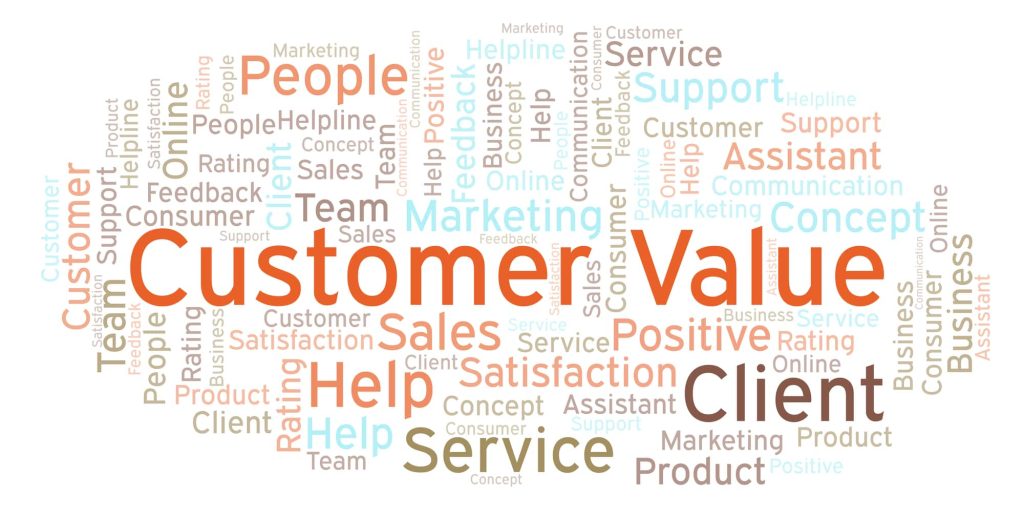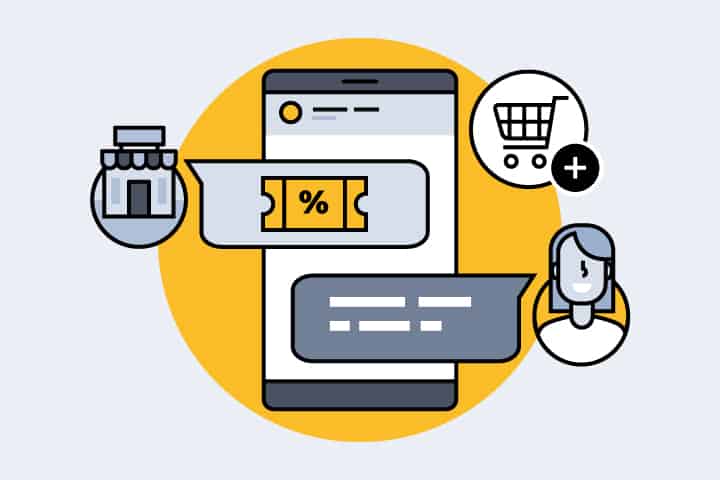As seasoned marketers and accountants both agree, in the bustling world of ecommerce, where competition is just a click away, delivering an exceptional customer experience has become the linchpin of success. Let’s dive into how you can set your online store apart by personalizing shopping experiences and streamlining your website’s user interface and navigation.
Personalize Shopping Experiences
Have you ever visited an online store and felt like it was crafted just for you? That’s personalization at its best. In today’s digital age, utilizing advanced personalization algorithms and machine learning isn’t just a fancy feature; it’s a necessity. According to a report by Epsilon, 80% of consumers are more likely to make a purchase from a brand that provides personalized experiences. This staggering statistic underscores the power of customization in enhancing customer satisfaction and loyalty. Also, machine learning can help with improving security for an even better customer experience. Machine learning algorithms enable real-time transaction monitoring, detecting anomalies and potential fraud to enhance security in online transactions.
Personalization can manifest in various forms, from recommending products based on browsing history and purchase patterns to personalized email marketing campaigns. Imagine logging onto a website and being greeted by a selection of products that perfectly match your interests and needs. It’s like having a personal shopper within the digital realm. This level of customization not only makes shopping more enjoyable but also significantly increases the likelihood of conversion.
Streamline User Interface and Navigation
Now, let’s talk about the unsung hero of ecommerce success: a clean, intuitive UI/UX design. The goal here is simple – make it as easy as possible for your customers to find what they’re looking for and make a purchase. A study by Forrester Research found that a well-conceived, frictionless UX design could potentially increase conversion rates by up to 400%. To enhance your online store’s performance and scalability, consider leveraging professional ecommerce development services for tailored solutions. This is a clear indicator of the importance of having a user-friendly website.
Here are a few tips to streamline your website’s UI/UX:
- Simplicity is Key: Keep your design clean and uncluttered. A minimalist approach can help users focus on what’s important – your products.
- Intuitive Navigation: Ensure your site’s navigation is logical and intuitive. Categories should be clearly labeled, and searching for products must be effortless.
- Mobile Responsiveness: With over half of internet traffic coming from mobile devices and apparently little concern for how to reduce screen time, your ecommerce site must perform flawlessly on smartphones and tablets.
- Fast Load Times: A slow website is a conversion killer. Optimize your site’s speed to ensure that pages load quickly, reducing bounce rates and improving the overall user experience.
Maximizing Customer Value and Retention

In the vast ocean of ecommerce, where countless ships vie for the attention of the same audience, how do you ensure your vessel not only attracts visitors but keeps them coming back? The secret lies in maximizing customer value and customer retention. Let’s navigate through the strategies of loyalty programs and cart recovery techniques to keep your customers anchored to your brand.
Enhance Lifetime Value (LTV) with Loyalty Programs
Did you know that increasing customer retention rates by just 5% can boost profits by 25% to 95%? This eye-opening statistic from Bain & Company highlights the significance of loyalty programs in your ecommerce strategy. Loyalty programs are not just a token of appreciation for your customers; they are a powerful tool to encourage repeat purchases and elevate the customer’s lifetime value.
Implementing a loyalty program can take various forms:
- Points System: Where customers earn points for every purchase, which can be redeemed for discounts or freebies.
- Tier System: Encouraging customers to reach different levels of loyalty, unlocking exclusive benefits with each tier.
- VIP Benefits: Offering special perks to your most loyal customers, such as early access to sales or free shipping.
The key is to make your loyalty program enticing enough that customers feel valued and motivated to return. Remember, a happy customer is a loyal customer.
Implement Effective Cart Recovery Techniques
Ever wonder what happens to those who wander off with items left in their cart? Well, they’re not lost at sea. With effective cart recovery techniques, you can reel them back in. On average, 69.57% of online shopping carts are abandoned, according to Baymard Institute. But here’s the kicker: a well-crafted, personalized email or SMS outreach can bring them back, significantly boosting your conversion rates.
Here are a few tips to make your cart recovery messages more effective:
- Timing is Everything: Send the first reminder within an hour of cart abandonment to catch customers while your store is still fresh in their minds.
- Personalize Your Message: Address the customer by name and remind them exactly what they left behind. A little nudge saying, “Forgot something?” can go a long way.
- Offer a Little Nudge: Sometimes, a small incentive, like a 10% discount or free shipping, can sweeten the deal and encourage customers to complete their purchase.
Implementing these strategies not only shows your customers that you value their business but also demonstrates your commitment to providing a seamless shopping experience.
Leveraging Technology and Data for Growth
In the dynamic world of ecommerce, staying ahead of the curve means embracing the power of technology and data. But how exactly do you harness these tools to fuel growth and outmaneuver the competition? Let’s delve into the realms of data analytics and AI to uncover strategies that can propel your online store to new heights.
Utilize Data Analytics for Informed Decision Making
Imagine navigating a ship in the vast ocean without a compass. That’s what running an ecommerce business without data analytics feels like. Data analytics acts as your compass, guiding you through the sea of market trends, customer preferences, and operational efficiencies. According to a survey by Deloitte, businesses that leverage customer behavior data outperform their peers by 85% in sales growth margins. This statistic underscores the critical role of data analytics in making informed decisions.
By analyzing customer data, you can:
- Tailor marketing campaigns to target specific segments, enhancing their effectiveness.
- Refine product offerings based on customer preferences and buying patterns.
- Optimize pricing strategies to stay competitive while maximizing profitability.
Incorporating data analytics into your decision-making process ensures that your strategies are backed by concrete insights, significantly reducing guesswork and enhancing the precision of your business moves.
Optimize with AI and Machine Learning
Now, let’s turn our attention to the futuristic realms of AI and machine learning. These technologies are not just buzzwords but transformative tools that can automate operations, predict trends, and personalize customer experiences. For instance, AI-driven demand forecasting can improve stock management, minimizing overstock and understock scenarios. This optimization leads to cost savings and ensures that your customers always find what they’re looking for.
AI and machine learning can revolutionize your ecommerce business by:
- Providing personalized product recommendations based on individual customer behavior, thereby increasing sales and customer satisfaction.
- Automating customer service with a knowledge base chatbot that offers 24/7 assistance, answering queries, and resolving issues promptly.
- Enhancing the efficiency of marketing campaigns through predictive analytics, ensuring that your marketing dollars are spent wisely.
A study by Salesforce revealed that 51% of marketing leaders are already using AI, with an additional 27% planning to incorporate the technology within two years. This trend highlights the growing recognition of AI’s potential to drive ecommerce growth.
Innovative Marketing and Advertising Strategies

In the ever-evolving landscape of ecommerce, standing out requires more than just a great product; it demands innovative marketing and advertising strategies that capture attention and engage customers at every touchpoint. Utilizing data analytics in marketing, businesses can gain deeper insights into customer behavior and preferences, allowing for more targeted and effective campaigns. Partnering with a seasoned ecommerce agency in the UK can significantly amplify these efforts. Such agencies specialize in crafting tailored strategies that leverage both traditional and digital channels to maximize reach and engagement, ensuring your ecommerce brand not only attracts but also retains a loyal customer base.
Develop a Multichannel Marketing Approach
In today’s digital world, your customers are everywhere – scrolling through social media, reading emails, searching on Google, and more. To capture their attention, you need to be everywhere they are. That’s where a multichannel marketing approach comes into play. This strategy involves creating a cohesive marketing message across various channels, including PPC (Pay-Per-Click) advertising, SEO (Search Engine Optimization), social media, and email marketing.
But why spread your efforts across multiple channels? Here’s the deal: Omnichannel shoppers have a 30% higher lifetime value than those who shop using only one channel, according to Google. This statistic highlights the importance of engaging with your audience through various platforms to maximize reach and conversion.
Here are a few key components of a successful multichannel marketing strategy:
- Consistent Brand Messaging: Ensure your brand’s voice and message are consistent across all channels to create a cohesive brand identity.
- Channel-Specific Content: Tailor your content to fit the platform you’re using. What works on Instagram might not work on email.
- Data-Driven Insights: Use analytics to understand which channels are most effective for your business and optimize your strategy accordingly.
Harness the Power of Social Proof
Ever wondered why we’re more likely to try a new restaurant if it’s packed with customers? That’s social proof in action. Social proof, the psychological phenomenon where people assume the actions of others reflect correct behavior, is a powerful tool in ecommerce. By leveraging customer reviews, testimonials, and user-generated content, you can boost your brand’s credibility and trust, significantly influencing purchasing decisions.
Consider this: 93% of consumers say online reviews impact their purchasing decisions, according to Podium. This statistic underscores the value of social proof in reassuring potential customers about the quality of your products or services.
To effectively harness the power of social proof, consider the following tactics:
- Showcase Customer Reviews: Display reviews prominently on your product pages and homepage. Real customer experiences can sway hesitant shoppers.
- Encourage User-Generated Content: Motivate your customers to share their experiences on social media. This not only provides you with valuable content but also increases your brand’s reach.
- Highlight Testimonials: Feature testimonials from satisfied customers on your website and marketing materials. Personal stories resonate with potential buyers.
Testing and Optimization for Continuous Improvement
In the fast-paced world of ecommerce, resting on your laurels can mean getting left in the digital dust. Continuous improvement through testing and optimization is not just a good practice – it’s essential for survival and growth. When sending out emails, you should do your best to complete bulk email verification so your emails get delivered rightly and you avoid spammy outputs. Let’s explore how A/B testing and SEO optimization can become the gears of progress for your online store.
A/B Testing for Enhanced User Experience
Imagine you’re a chef in a kitchen experimenting with recipes to find the perfect dish that will delight your guests. That’s A/B testing in the digital realm. A/B testing, or split testing, involves comparing two versions of a web page to see which one performs better in terms of user engagement and conversion rates. It’s about making informed decisions rather than going with your gut.
Why is A/B testing crucial?
- Improve Conversion Rates: Small changes in your call to action (CTA) or landing page design can lead to significant improvements in conversion rates.
- Enhanced User Experience: By testing different elements, you can understand what works best for your audience, leading to a more satisfying user experience.
- Reduce Bounce Rates: A well-optimized page keeps users engaged longer, reducing bounce rates and increasing the chances of conversion.
Remember, A/B testing is not a one-time event but a continuous process of refinement and optimization. Start with hypotheses based on data and user feedback, test your changes, analyze the results, and then iterate. This cycle of testing and learning will guide you to a more successful ecommerce strategy.
Continuous SEO Optimization
Now, let’s shift gears to SEO optimization. If A/B testing is the chef in the kitchen, SEO is the beacon that guides customers to your restaurant. Continuous SEO optimization ensures that your online store remains visible and attractive to search engines, leading potential customers right to your doorstep.
SEO is a marathon, not a sprint. It involves:
- Keyword Research: Understanding what your potential customers are searching for and optimizing your content to match those queries.
- Content Quality: Creating high-quality, relevant content that provides value to your audience, encouraging them to stay longer and engage more with your site.
- Building a Robust Backlink Profile: High-quality backlinks from reputable sites signal to search engines that your site is authoritative and trustworthy, improving your rankings.
Consider this: The first page of Google captures up to 92% of search traffic clicks, according to Smart Insights. This statistic underscores the importance of ongoing SEO efforts to keep your site ranking high and visible to your target audience.
- SEO is not just about pleasing search engines but about creating a better, more user-friendly experience for your visitors. Regularly updating your SEO strategy to reflect changes in search engine algorithms, market trends, and user behavior is crucial for staying ahead.
Optimizing Ecommerce Operations for Efficiency

In the bustling world of ecommerce, efficiency isn’t just a buzzword-it’s the backbone of success. As online shopping continues to grow at an unprecedented rate, the need for streamlined operations becomes increasingly critical. Let’s dive into how optimizing logistics and embracing sustainable practices can not only improve your bottom line but also attract a more conscientious consumer base.
Streamlining Logistics and Fulfillment
Imagine the journey of a product from warehouse to doorstep as a relay race. Each leg, from storage to delivery, needs to be as swift and seamless as possible to ensure a winning customer experience. Here’s where the magic of logistics optimization comes into play.
- Advanced Software Solutions: Utilizing cutting-edge logistics software (for example, Transporeon or alternatives), or you can use a ecommerce development services to create a unique tool for your business to transform your fulfillment process. These solutions offer real-time tracking, automated warehousing, and efficient route planning, significantly reducing delivery times and operational costs.
- Partnerships with 3PL Providers: Sometimes, the best way to streamline logistics is to partner with experts. Third-party logistics (3PL) providers can take the burden off your shoulders, offering scalable and flexible solutions that adapt to your business’s evolving needs.
- Optimizing Truck Fleet Management: Effectively managing your truck fleet by using a vehicle work order template, is crucial for efficient logistics operations, especially investing in regular maintenance and driver training ensures maximum productivity and safety on the road, including proper utilization of dock levelers for seamless loading and unloading warehouse processes.
A stat to ponder: According to a study by Capgemini, companies that excel in logistics and supply chain management can reduce their costs by up to 15% and increase their revenue by up to 16%. This starkly highlights the impact of efficient logistics on an ecommerce business’s profitability.
Implementing Sustainable Practices
As the global consciousness shifts towards sustainability, ecommerce businesses have a unique opportunity to lead the charge. Implementing eco-friendly practices not only benefits the planet but also resonates with a growing segment of consumers who prioritize environmental responsibility.
- Sustainable Packaging: Switching to recyclable or biodegradable packaging materials can significantly reduce your carbon footprint. Moreover, eco-friendly packaging often becomes a talking point, enhancing your brand image.
- Energy Efficiency: Adopting energy-efficient practices in your operations, from green web hosting to LED lighting in warehouses, contributes to sustainability and can also lead to cost savings.
- Eco-Friendly Products: Offering products that are environmentally friendly, whether through materials, production processes, sustainable packaging, or supply chain ethics, appeals to eco-conscious consumers and sets your brand apart.
Did you know? A Nielsen report revealed that 73% of global consumers are willing to change their consumption habits to reduce their environmental impact. This statistic underscores the growing importance of sustainable practices in attracting and retaining customers.
Building Community and Brand Loyalty
In the digital age, ecommerce isn’t just about selling products; it’s about creating connections. Building a loyal community around your brand can transform one-time buyers into lifelong advocates. Let’s explore how leveraging social media and offering exceptional customer support can be your golden tickets to cultivating brand loyalty and a thriving community.
Leveraging Social Media to Create a Brand Community
Social media is not just a platform for advertising; it’s a vibrant stage for storytelling and community building. Engaging with your followers goes beyond promotional posts; it’s about creating content that resonates, sparks conversations, and fosters a sense of belonging.
- Interactive Content: Polls, quizzes, and live Q&A sessions invite your audience to participate actively, making them feel like a part of your brand’s journey.
- Behind-the-Scenes Peeks: Sharing the stories behind your products or showcasing your team humanizes your brand, building a deeper connection with your audience.
- User-Generated Content: Encourage your community to share their experiences with your products. It’s authentic, relatable, and, most importantly, highly persuasive.
A staggering 78% of consumers believe that brands connected to social media provide a better customer experience, as reported by Salesforce. This statistic underscores the power of social media in building relationships that go beyond the transactional.
Offering Exceptional Customer Support
The cornerstone of any successful ecommerce business is stellar customer support. In an era where consumers have endless choices at their fingertips, the level of support you provide can set you apart from the competition.
- 24/7 Chatbots: Implementing chatbots and knowledge base software on your website ensures that help is always available, providing instant responses to customer queries and improving overall satisfaction.
- Personalized Social Media Assistance: Engaging with customers directly on social media platforms adds a personal touch to your support efforts, making customers feel valued and heard.
- Proactive Problem Solving: Don’t wait for customers to reach out with issues. Anticipate potential problems and address them proactively, demonstrating your commitment to their satisfaction.
Consider this: A report by American Express found that 33% of customers would consider switching companies after just a single instance of poor service. This highlights the critical role of customer support in retaining customers and fostering loyalty.
Conclusion: Crafting a Winning Ecommerce Strategy
As we navigate the conclusion of our comprehensive guide to ecommerce success, let’s anchor our focus on two pivotal strategies that will ensure your ecommerce ship not only sails smoothly but also outpaces the competition. Embracing continuous learning and adaptation, along with rigorous performance analysis, are your compass and sextant in the vast ocean of ecommerce.
Stay Ahead with Continuous Learning and Adaptation
The digital landscape is as dynamic as the sea; what works today may not hold water tomorrow. Staying abreast of the latest ecommerce trends and technological advancements is not just beneficial—it’s imperative.
- Ecommerce Trends: Whether it’s the rise of voice search, the adoption of AI in customer service, or the latest in payment processing, being informed enables you to adapt swiftly and effectively.
- Technological Advancements: From blockchain securing transactions to augmented reality (AR) enhancing the shopping experience, technology is revolutionizing ecommerce. Keeping an eye on these developments can help you leverage them to your advantage.
Consider this: A report by the National Retail Federation highlighted that retailers who prioritize and invest in technology are more likely to report above-average sales growth. This underscores the importance of staying informed and agile in the fast-evolving ecommerce arena.
Measure, Analyze, and Refine
Steering your ecommerce venture to success requires more than just setting sail; it demands constant navigation and adjustments. Regular performance analysis using key metrics and KPIs is crucial in identifying what strategies are working and which ones need recalibration.
- Key Metrics: Conversion rates, average order value, customer lifetime value, and cart abandonment rates are just a few of the metrics that should be on your radar.
- KPIs for Growth: Track specific growth indicators, such as new customer acquisition rates, repeat customer rates, and revenue growth from email marketing.
Armed with this data, you can refine your ecommerce tactics, optimizing your marketing efforts, improving customer experience, and ultimately boosting your bottom line. A study by McKinsey & Company revealed that data-driven organizations are 23 times more likely to acquire customers, six times as likely to retain those customers, and 19 times as likely to be profitable as a result. This highlights the transformative power of data in crafting a winning ecommerce strategy.

